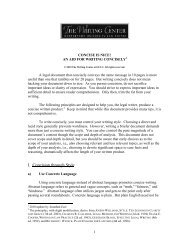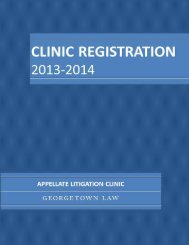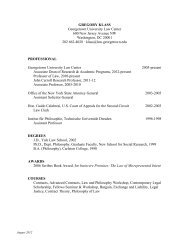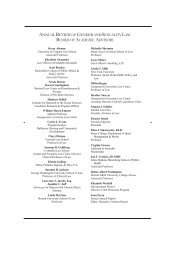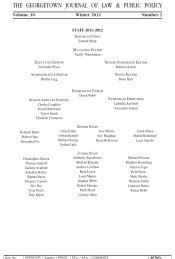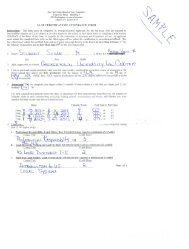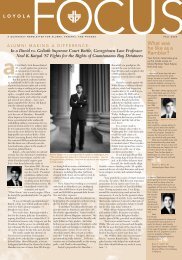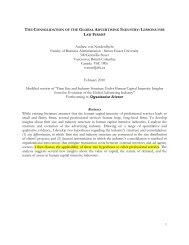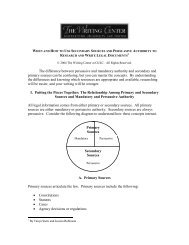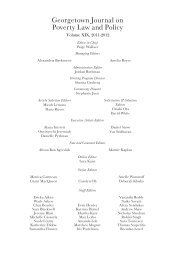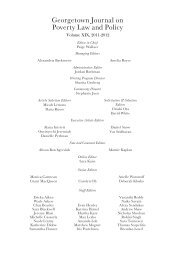Date: April 12, 2013 Topic: The Shrinking ... - Georgetown Law
Date: April 12, 2013 Topic: The Shrinking ... - Georgetown Law
Date: April 12, 2013 Topic: The Shrinking ... - Georgetown Law
You also want an ePaper? Increase the reach of your titles
YUMPU automatically turns print PDFs into web optimized ePapers that Google loves.
General Counsel with Power? 2011 <br />
Afterword: <strong>The</strong> Future for General Counsel <br />
Richard Susskind <br />
It was fascinating to be in regular dialogue with Professor Sako during the project discussed in this <br />
report. Rarely have I had the chance to hold in-‐depth discussions about the legal market with someone <br />
who is not a lawyer. And here is one of the main contributions that Professor Sako makes – she does not <br />
have the limited perspective of a practising or academic lawyer, she has no legal axe to grind, no legal <br />
business to sustain or disrupt, nor any legal overlord to appease. Rather, she brings the expertise and <br />
experience of an economist and management theorist, someone who understands economic forces, <br />
business strategy, industry upheaval, and organizational change. And she applies this knowledge to the <br />
law, as part of her growing interest in the professions more generally. <strong>The</strong> legal world should warmly <br />
welcome the objective insights of an expert outsider who is looking afresh at its marketplace. <br />
Methodologically, this report is different from much that is held out as research into the legal industry. I <br />
had anticipated a document that was brimming with data, diagrams, tables, and percentages; and <br />
maybe even a formula or two. But I now see this would be pseudo-‐science. This research shows us that <br />
General Counsel are a grouping of lawyers that are too diverse in the nature of their work, in the size of <br />
their teams and broader organizations, in their industries and markets, and in their geographical <br />
presence, for it to be sound to claim that x% of GCs believe this or Y% prefer that. <strong>The</strong>se statistical <br />
claims are the stuff of the transient PR-‐based research that surfaces every few weeks whose aim is to <br />
secure a headline in the trade press. I see more clearly now that these superficially plausible pie charts <br />
and bar graphs do not in fact improve our understanding. <br />
Trends <br />
What the Oxford research instead provides is a snapshot of the central trends in the buyer’s side of the <br />
legal market. Its scope is limited, though, because the focus is on the in-‐house functions of very large <br />
organizations. As the list in the Appendix shows, most of the businesses involved in the study are major <br />
household names (it is unusual in itself, incidentally, in the world of research into the legal market to be <br />
able to see who has actually been consulted). <br />
26 <br />
Said Business School | University of Oxford



